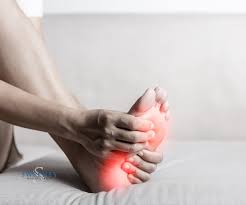Diabetic neuropathy is a common complication of diabetes that affects the nerves, leading to symptoms such as pain, numbness, and tingling, typically in the hands and feet. Advancements in treatments are providing new avenues for addressing symptoms and improving quality of life. Here are several treatment options used to treat diabetic neuropathy and help patients improve their quality of life.
Injection Therapy to Manage Diabetic Neuropathy
Injection therapy has become a groundbreaking approach to managing pain caused by diabetic neuropathy. Treatments like lidocaine and corticosteroid injections are commonly used to provide targeted pain relief by temporarily blocking nerve signals. This method offers a practical option for patients seeking non-invasive pain management strategies.
Stem cell therapy is also gaining attention as a promising treatment option. Studies suggest that stem cell injections encourage nerve regeneration and alleviate chronic inflammation. While further research is ongoing, this therapy shows promise in delivering localized relief, addressing pain directly at its source.
Medications to Manage Nerve Pain
Pharmacological options for diabetic neuropathy have also expanded, providing more diverse ways to ease symptoms. Medications that are often prescribed include anticonvulsants, such as pregabalin and gabapentin, which help to calm overactive nerve signals. Duloxetine and amitriptyline, classified as antidepressants, are also frequently recommended due to their ability to alleviate nerve-related discomfort. These treatments work by targeting specific receptors in the nervous system, which can help reduce pain sensations in patients managing neuropathy.
Acupuncture to Relieve Symptoms
Acupuncture has gained recognition as a complementary treatment for diabetic nerve damage. This ancient practice involves the insertion of thin needles into specific points of the body to stimulate nerve pathways. Studies have explored acupuncture’s potential to enhance blood flow and reduce inflammation around affected nerves. While it may not replace traditional therapies, its integration into pain management regimens has shown promise in reducing symptoms of tingling and numbness for some individuals.
Physical Activity to Improve Neuropathy
Regular physical activity is a highly effective approach to managing diabetic neuropathy and improving overall quality of life. Low-impact activities, such as walking, swimming, or yoga, are particularly beneficial as they are gentle on the joints while promoting better circulation and nerve health. These exercises enhance blood flow to the extremities and help maintain flexibility and balance.
Regular exercise boosts mood, reduces stress, and increases energy levels. It also improves glucose regulation, which is key for overall health. This, in turn, supports nerve function and reduces the risk of complications.
Physical therapists often help individuals achieve their goals by designing personalized exercise plans catering to their needs and abilities. This tailored approach encourages safety and effectiveness, helping individuals incorporate movement into their daily routines. By addressing the specific challenges associated with diabetic neuropathy, they foster long-term physical health and well-being.
Exploring New Treatment Options in Neuropathy Care
By exploring options such as injection therapy, medication, acupuncture, and consistent physical activity, patients and healthcare providers can develop strategies aimed at managing symptoms effectively. While no single approach works for everyone, a combination of these treatments may provide relief and improve mobility. As research continues, new avenues for treatment may offer additional opportunities for enhanced care. Work with a healthcare provider to determine the best treatment plan for you.

